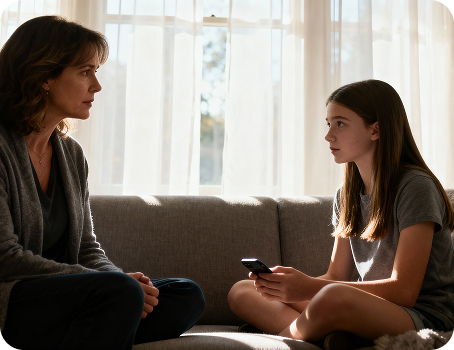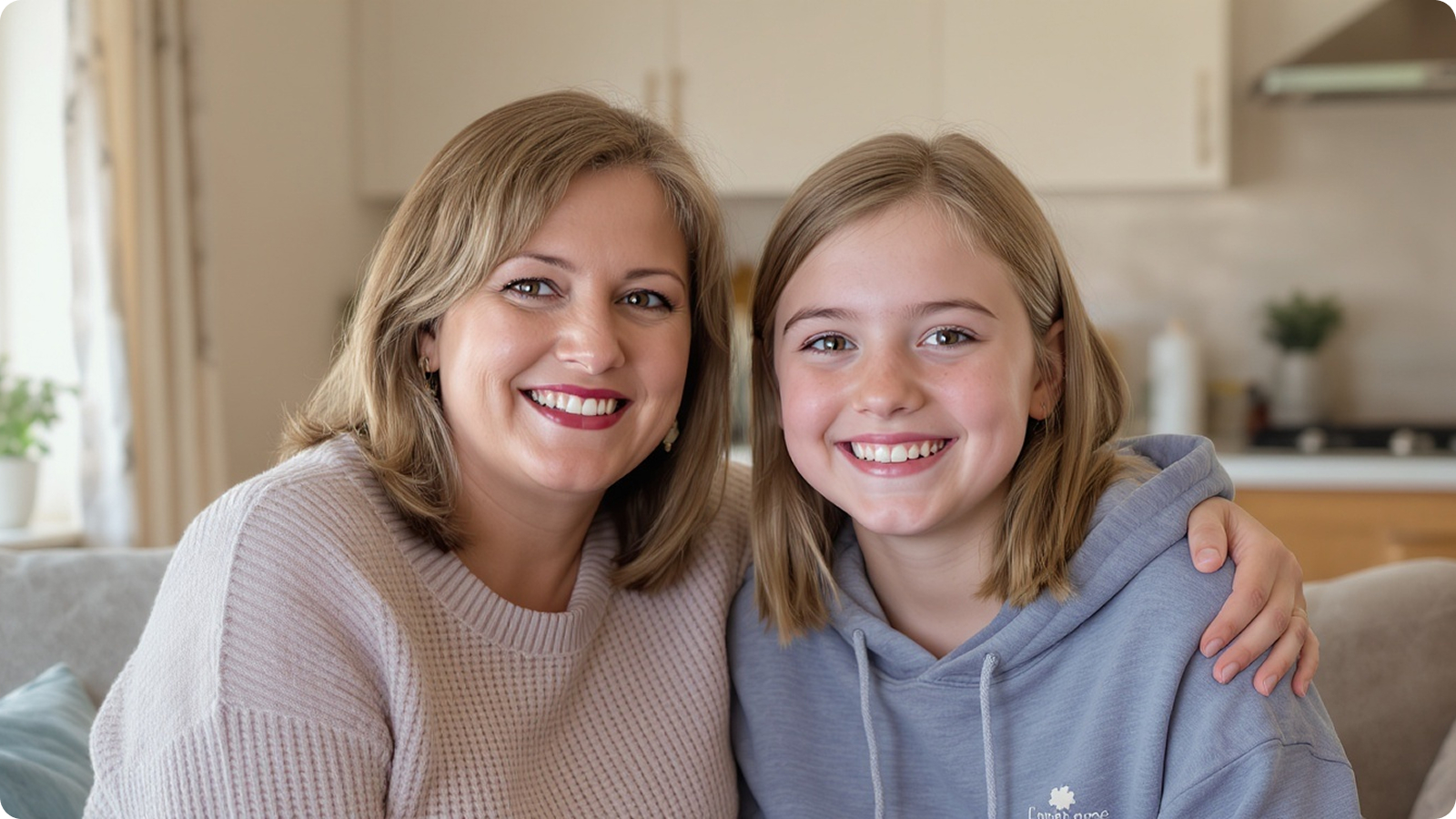I'm Monica Caldwell, a nurse from Oregon and mom to 14-year-old Siena. Last spring, I started noticing small changes—Siena wearing long sleeves in warm weather, skipping meals, spending hours on TikTok behind her locked bedroom door. When I asked if everything was okay, she'd force a smile. "I'm fine, Mom. Just tired." But her eyes looked hollow. One morning, I saw her pull down her sleeve when I walked into the kitchen. My heart stopped. I knew something was terribly wrong, but she wouldn't talk to me. I felt helpless watching my daughter fade away, knowing she was suffering but having no idea how to reach her.
Meet the Caldwell Family Story
From silent struggle to healing—how detecting harmful content saved my daughter's life

Our Family's Struggle

Challenge
It started subtly in March. Siena became obsessed with TikTok, scrolling for hours after school. Her mood shifted—quiet, withdrawn, irritable when I asked about her day. She stopped eating dinner with us. "I'm not hungry," became her daily response. Her grades dropped. Her friends stopped calling. I noticed her wearing hoodies constantly, even sleeping in them. When I tried to hug her one evening, she flinched and pulled away. "Don't touch me, Mom!" The anger in her voice broke my heart. I suspected something was happening online, but she had a password on her phone and refused to let me see it. "You don't trust me! Everyone at school has privacy!" I didn't want to invade her space, but I couldn't shake the feeling that time was running out. The distance between us felt impossible to cross, and I was terrified I'd lose her completely.

Solution
My sister, a school counselor, urged me to try FamiSafe. I installed it that weekend and sat Siena down to explain. This wasn't about control, but because I loved her and wanted to help. Within three days, the alerts started flooding in. High-risk keywords: "how to hide cuts," "ana tips," "thinspo," "I want to disappear." My hands trembled as I scrolled through her TikTok search history and watched the videos she'd been viewing. Endless pages of self-harm content, eating disorder tips, depression triggers. I immediately blocked those accounts and topics, set time limits on TikTok, and called her school psychologist. That night, I sat on Siena's bed and gently showed her what I'd discovered. She broke down in tears. "I didn't know how to stop watching," she whispered. We started therapy the following week. I adjusted her phone settings to filter harmful content and set up regular check-ins where we'd review her feed together. By summer, Siena was eating again, smiling more, and opening up to me about her feelings instead of hiding them.
The Caldwell Family Today








